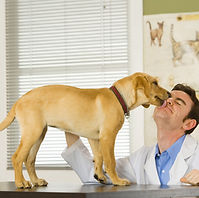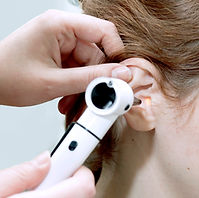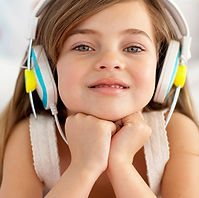
Sense of Taste: Parts of the Tongue

This lesson contains affiliate links to products I have used and personally recommend. At no cost to you, I make a commission for purchases made through the links or advertisements. These commissions help to pay for the costs of the site and enable it to remain free for anyone who wants to use it.
Objectives:
-
Students will learn about the parts of the tongue.
-
Students will be able to describe the functions of the tongue.
-
Students will be able to describe the proper way to take care of the tongue.
-
The students will be able to describe what it is like to eat without moving the tongue.
Question that encompasses the objective:
Think about your tongue. What do you use your tongue for besides eating?
Prepare the Learner: Activating Prior Knowledge.
How will students prior knowledge be activated?
Warm up by asking students:
-
What do you know about your tongue and your sense of taste?
-
Have you ever had a problem with your tongue? (i.e., sore on the tongue, burn on the tongue, tongue surgery)
Common Core State Standards:
-
CCSS.ELA-LITERACY.SL.2.1
-
CCSS.ELA-LITERACY.SL.2.1 B
-
CCSS.ELA-LITERACY.SL.2.4
-
CCSS.ELA-LITERACY.W.2.2
-
CCSS.ELA-LITERACY.W.3.2
-
CCSS.ELA-LITERACY.W.3.2 B
-
CCSS.ELA-LITERACY.SL.3.1
-
CCSS.ELA-LITERACY.SL.3.4
Materials and Free Resources to Download for this Lesson:
-
“Don’t Move Your Tongue!” activity materials:
-
Plates
-
Napkins
-
Chocolate candy
-
Chewing gum
-
Input:
What is the most important content in this lesson?
To reach this lesson’s objective, students need to understand:
-
The parts of the tongue and where the parts are located.
-
The functions of the tongue.
-
The proper way to take care of the tongue in order to keep it healthy.
How will the learning of this content be facilitated?
-
Prior to the start of the lesson, enlarge the “Tongue Map” worksheet and laminate. Also laminate the “Taste Bud” cards. Place the “Tongue Map” worksheet onto the board or a wall.
-
**If you prefer, you can add Velcro to the “Taste Bud” cards and “Tongue Map” worksheet.**
-
Begin the lesson with a review of the “Taste Buds”. Show the students the “Tongue Map” and the “Taste Bud” cards. Hold up one card, say what taste bud it is, and have the students tell you which part of the tongue it belongs on. Once all of the taste buds have been place onto the tongue, the teacher will lead a discussion about the different taste buds. The teacher should ask for examples of foods from each taste bud group. Afterwards, the teacher will explain to the students that they are going to learn more about the tongue and the other parts that make up the tongue.
-
The teacher will hand out the “Diagram of the Tongue” worksheet. If it is possible, project the “Diagram of the Tongue” onto the board using a projector or put into a PowerPoint document and project so that the teacher can point to the parts of the tongue while they explain. Since writing the names of the parts of the tongue may be difficult, the students will instead color each part of the tongue a different color. The teacher’s diagram will be color-coded, so the students will copy what that diagram looks like. From this activity, the students will learn about the parts of the tongue, the functions, and where they are located.
-
Parts of the Tongue: Locations & Functions:
-
Epiglottis: a flexible flap of cartilage at the root of the tongue. It acts as a switch between the larynx and esophagus. It allows air to pass through to the lungs and food to pass through to the gastrointestinal tract.
-
Palatopharyngeal Arch: folds of the mucous membrane that pass from the soft palate to the pharynx (throat). Helps to pull the pharynx up and down while eating.
-
Palatine Tonsil: located on each side of the pharynx. Helps in defending the body against certain infections.
-
Lingual Tonsil: two small mounds of tissue (lymphatic) that are located at each side of the base of the tongue. Assists the immune system.
-
Palatoglossal Arch: folds of mucous membrane that pass from the soft palate to the side of the tongue.
-
Terminal Sulcus: groove on the tongue that looks like a V. separates the oral and pharyngeal parts.
-
Foliate Papillae: vertical folds on each side near the back of the tongue. Four out of five foliate papilla are associated with the taste buds.
-
Circumvallate Papilla: bitter taste buds. Form a V shape in the back of the tongue.
-
Dorsum of Tongue: superior surface of the tongue.
-
Fungiform Papilla: sweet and sour taste buds. Located on the surface of the tongue.
-
Filiform Papilla: the most numerous papillae scattered on the surface of the tongue.
-
-
Explain the role of the tongue. The tongue is not only used for tasting; it performs other roles. We use our tongue to articulate sounds for speech. This is why if we have something wrong with our tongue (i.e., a bad burn or if we had tongue surgery), our speech might sound different. The tongue helps us swallow by moving chewed food down our throat. The tongue is also a cleaner. We use our tongue to move food that may be stuck between our teeth, gums, and cheeks.
-
Once the diagram is explained, have the students break into groups of three. Give each group a mirror. Have the students use the mirror to look at their tongues. Encourage the students to use their “Diagram of the Tongue” worksheet as a guide and try to locate the parts of the tongue they just learned about. This is a quick activity; so allow about 5-10 minutes for the students to complete.
-
Once the students have completed the tongue activity, have them reconvene at their desks or stay in their groups (teacher preference). Explain that we must take care of our tongue in order to keep it healthy. One of the ways that we can keep our tongue healthy is by brushing it with a toothbrush. Explain to the students that every time they brush their teeth, they should use their toothbrush and brush their tongue. By doing this, they are removing any bacteria that may be on their tongue.
-
After the diagram, functions, and tongue hygiene are explained, the students will participate in the activity “Don’t Move Your Tongue!” Give each student a plate, napkin, piece of chocolate, and piece of chewing gum. Explain again how the tongue plays a big role in helping us eat. Tell the students that the activity they are going to do will require them to chew without moving their tongue. Have the students start with the chocolate candy and conclude with the chewing gum. Allow the students to work for about 10-15 minutes. Reconvene and discuss when the students are finished.
**It is important to note any allergies the students may have. This activity can be done with any food item,
so adjust accordingly if there are allergies present in your class. It is also important to monitor the students
during the activity since it involves food**
The final assessment will be for the students to answer the question based upon the “Don’t Move Your Tongue” activity:
-
Think about the activity you just did. Explain why it was difficult to eat without moving your tongue. What problems do you think arise when someone’s tongue is paralyzed (cannot move) and they try to eat? What did you do differently while eating since you couldn’t move your tongue? Which item was more difficult: the chocolate or the chewing gum?
Time/Application
3-5 minutes
Guided Introduction
-
Introductory Activity (Review of taste buds)
-
Diagram of the Tongue
-
Activity: “Don’t Move Your Tongue!”
-
Discussion of Activity
-
Independent Assessment
10 minutes
Guided Mini-Lesson: Prezi Presentation, "Who is Tasting?"
-
Enlarge the “Tongue Map” worksheet and cut-out the “Taste Buds” cards
-
Review the five taste buds and their locations with the students.
15 Minutes
Diagram of the Tongue
-
Give each student a “Diagram of the Tongue” worksheet.
-
Project the diagram onto the board either through a projector or PowerPoint presentation.
-
Tell the students that as each part is explained, they should color it in (tell them to follow the diagram that you are projecting).
-
Explain the functions of the tongue as well as the appropriate way to keep your tongue healthy (tongue hygiene).
15 Minutes
Activity: “Don’t Move Your Tongue!”
-
Give each student a napkin, a plate, a piece of chocolate, and a piece of chewing gum.
-
Instruct the students to try and eat the chocolate and chew the gum without moving their tongue. Tell the students to tart with the chocolate.
-
At the end of 15 minutes, have the students return to their desks and discuss their observations.
Closure/Assessment
10 minutes
-
As an independent assessment, the students will answer the question:
-
Think about the activity you just did. Explain why it was difficult to eat without moving your tongue. What problems do you think arise when someone’s tongue is paralyzed (cannot move) and they try to eat? What did you do differently while eating since you couldn’t move your tongue? Which item was more difficult: the chocolate or the chewing gum?
-
-
Appropriate answers should include (but will vary):
-
Our tongue is important when we eat. We are so used to moving our tongue when we eat that when we were told not to, it was difficult. When we swallow we need our tongue to help push the food down our throat. If someone has a paralyzed tongue, it may be difficult for them to get used to eating without being able to move their tongue.
-
-
If there is additional time, discuss questions from the tongue activity.
Individualized Instruction/Scaffolding
English Language Learners will be supported in this lesson through data-based heterogeneous grouping, verbal and written repetition of new vocabulary words, and multiple representation of vocabulary words through printed images and video.














